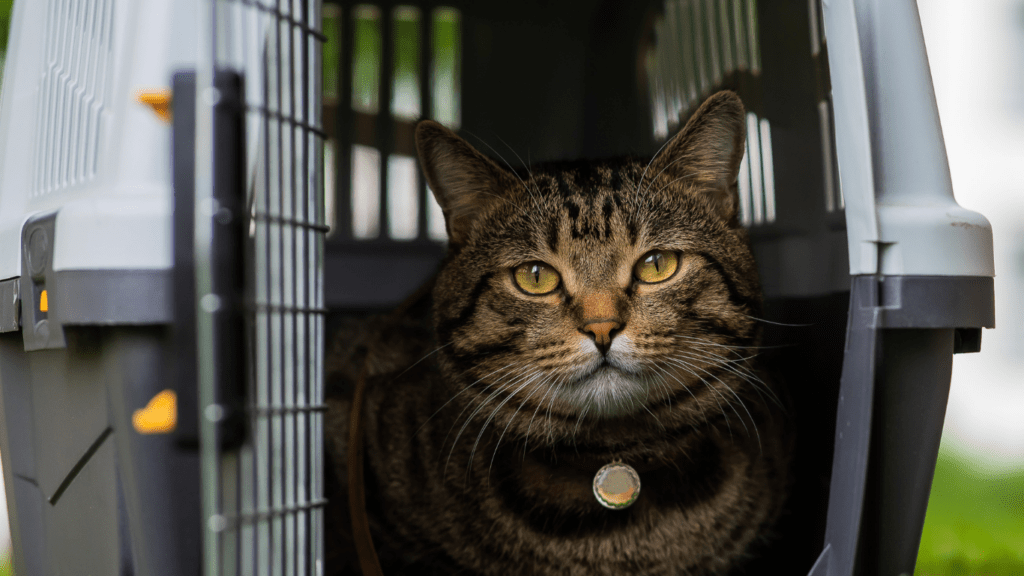Importance of Preparing for International Pet Travel
Thorough preparation ensures a smooth experience for both owners and their pets. Inadequate planning can result in stress, delays, and potential health risks. Owners must familiarize themselves with the regulations of the destination country, as different nations have varying requirements.
Compliance with Vaccination Regulations
Many countries mandate specific vaccinations for pets entering their borders. Rabies vaccination is commonly required. Owners should obtain an official vaccination certificate, which may need to be issued within a particular timeframe before travel to meet entry requirements.
Suitable Travel Crates
Choosing the right travel crate is crucial for pet safety and comfort. Crates must comply with airline regulations and provide adequate space for pets to stand, turn, and lie down comfortably. Crate training prior to travel can help pets feel more secure during the journey.
Health Certificates and Documentation
Health certificates, often required by destination countries, must be issued by a licensed veterinarian. The certificate validates that the pet is healthy and free from communicable diseases. Owners should also carry copies of vaccination records, identification tags, and microchip information.
Quarantine Requirements
Some countries impose quarantine periods for incoming pets. Knowing these requirements helps owners plan for the additional time and arrangements needed upon arrival. Failure to meet quarantine regulations can lead to extended separation from the pet.
Pet Insurance and Emergency Plans
Traveling internationally with pets carries inherent risks. Pet insurance that includes coverage for international travel can provide peace of mind. Owners should also prepare an emergency plan, including contacts for veterinarians in the destination country.
Acclimatizing to Travel
Acclimating pets to air travel can ease their anxiety. Gradual exposure to the travel environment, including car rides and crate stays, helps pets adapt to the experience. Discussing sedatives or anti-anxiety treatments with a veterinarian may be beneficial for particularly anxious pets.
Understanding Airline Policies
Each airline has specific policies regarding pet travel. Owners should review these policies in advance, noting restrictions on breeds, temperature guidelines, and in-cabin versus cargo travel options. Booking flights well in advance increases the likelihood of accommodating pets on the desired flight.
Overall, proactive and detailed planning is vital for a successful international pet travel experience.
Understanding Pet Travel Regulations
Navigating pet travel regulations can be complex. It’s essential to grasp these rules to avoid last-minute surprises and ensure a smooth journey.
Country-Specific Requirements
Each country imposes unique requirements for pet entry. Australia, for instance, has stringent quarantine laws, while the UK demands pet passports and microchips. Review the destination’s regulations well in advance. Check for restrictions on specific breeds and animals. Some countries prohibit certain types of pets. Reference official government websites or authoritative sources for accurate, updated information.
Health Certificates and Vaccinations
Health certificates verify a pet’s fitness to travel. Obtain these from a licensed veterinarian. Ensure vaccinations are current per your destination’s regulations. Rabies vaccine is a common requirement. Some countries ask for additional shots like canine influenza or feline leukemia. Document all vaccinations in the pet’s health certificate for verification at entry points.
Choosing the Right Pet Carrier

Selecting the appropriate pet carrier is crucial when planning international travel for pets. Ensuring the carrier meets airline standards and provides comfort will contribute to a smooth travel experience.
Airline Approved Carriers
Pet carriers must meet specific airline requirements. I always check the airline’s pet travel guidelines before selecting a carrier. Airlines usually specify dimensions, materials, and ventilation requirements. For example, the International Air Transport Association (IATA) sets stringent standards for pet carriers, including sturdy construction, secure latches, and adequate ventilation. Ensuring compliance with these standards avoids last-minute issues at the airport.
Size and Comfort Considerations
The pet carrier must also adequately fit the pet. The carrier should be large enough for pets to stand, turn around, and lie down comfortably. Using a tape measure, I measure my pet’s length, height, and width and compare these measurements to the carrier’s internal dimensions. A properly sized carrier helps reduce stress for my pet during the journey. For added comfort, including a soft blanket and familiar toys makes a significant difference.
Booking Flights for Your Pet
Booking flights for your pet involves careful planning to ensure their safety and comfort. Consider direct vs. connecting flights and preferred airlines for pet travel.
Direct vs. Connecting Flights
Choosing between direct and connecting flights impacts your pet’s well-being. Direct flights reduce the risk of travel stress, missed connections, and extended layovers. If direct flights aren’t available, select the shortest connecting flight with minimal layover time. Airlines typically handle pets in climate-controlled areas, but prolonged layovers can expose them to varying temperatures.
Preferred Airlines for Pet Travel
Select airlines renowned for pet travel services. United Airlines, Delta Airlines, and American Airlines offer specialized pet travel programs. Verify airline-specific pet policies, including carrier size regulations and necessary health documents. Lufthansa and Air France also provide exceptional pet travel services and maintain strict adherence to IATA guidelines. Always book flights early to secure a spot for your pet, as airlines have limited capacity for animal travel.
Preparing Your Pet for Travel
Proper preparation is essential for a smooth journey when traveling internationally with a pet. Focus on acclimating your pet to the carrier and ensuring a thorough pre-travel health check.
Acclimating to the Carrier
Introduce the carrier to your pet weeks before the trip. First, place the carrier in a common area of your home. Encourage your pet to explore it by placing treats, toys, or a familiar blanket inside. Gradually increase the time your pet spends in the carrier. Use praise and rewards to create a positive association. For short trips, carry your pet around the house. For dogs, consider taking them on short car rides in the carrier. Familiarity reduces stress during travel.
Pre-Travel Health Check
- Schedule a visit to the vet at least 2-3 weeks before departure.
- Ensure vaccinations are up-to-date and obtain a health certificate.
- Different countries have specific requirements; confirm these with your vet.
- Check for any needed treatments, like deworming or flea prevention.
- Discuss your pet’s health condition to identify any travel risks.
- Inquire about calming medications if your pet experiences anxiety.
- Carry copies of medical records, vaccination proofs, and the health certificate during travel.
Documentation and Paperwork
Traveling internationally with pets requires proper documentation to avoid complications. Ensuring that all paperwork is in order makes the process smoother and stress-free.
Pet Passports
Pet passports contain essential information for international pet travel. These documents include details like:
- microchip numbers
- rabies vaccination records
- pet health certificates
In many countries, authorities require a pet passport to verify compliance with their entry regulations. For instance, European Union member countries expect pets to have an EU Pet Passport, which each vet issues and updates as needed. Make sure to verify the specific requirements for your destination country before departure.
Import Permits
Certain countries mandate import permits for pets entering their borders. These permits ensure that pets meet local health and safety standards, minimizing the risk of disease transmission. For instance, Australia and New Zealand have stringent import permit regulations that include pre-travel blood tests and quarantine mandates. Obtain these permits well in advance, as the processing time varies by country. Check the official government website of your destination or consult with a pet travel agency for precise guidelines.
Managing Your Pet During the Journey
Prepping for your pet’s journey involves ensuring their comfort and safety throughout the trip.
In-Flight Pet Care Tips
Hydrate your pet. Ensure your pet has access to water before the flight and provide a spill-proof bowl inside the carrier. Feed a light meal a few hours before departure to avoid motion sickness. Exercise them adequately to reduce anxiety and promote rest during the flight. Bring familiar items—like a favorite toy or blanket—to provide comfort and reduce stress. Monitor temperature regulations, especially when traveling to or from extreme climates. Use an absorbent pad inside the carrier to handle any bathroom needs. Some airlines offer pet monitoring services. Ask about these to receive updates on your pet’s status.
What to Do Upon Arrival
Inspect your pet for signs of distress or illness immediately after landing. Offer water and a light meal if they appear hungry. Take them for a short walk to relieve themselves and stretch. Present all necessary documentation to customs and border control to ensure seamless entry. Find a nearby veterinary clinic for a check-up, especially if the travel was long or rigorous. Acclimate your pet to the new environment gradually by providing a quiet and comfortable space in your accommodation. Familiarize them with their new surroundings in small steps to reduce stress. Follow local pet regulations, such as leash laws and prohibited areas, to ensure compliance and safety.



 Lead Pet Behavior Specialist
Brian Camacho is an expert in pet behavior and training at Pet Paw Shack. With a deep understanding of animal psychology, he specializes in helping pets and their owners build strong, healthy relationships through positive reinforcement techniques. Brian’s innovative approach to training focuses on making behavior modification a fun and rewarding experience for both pets and their families.
Lead Pet Behavior Specialist
Brian Camacho is an expert in pet behavior and training at Pet Paw Shack. With a deep understanding of animal psychology, he specializes in helping pets and their owners build strong, healthy relationships through positive reinforcement techniques. Brian’s innovative approach to training focuses on making behavior modification a fun and rewarding experience for both pets and their families.
